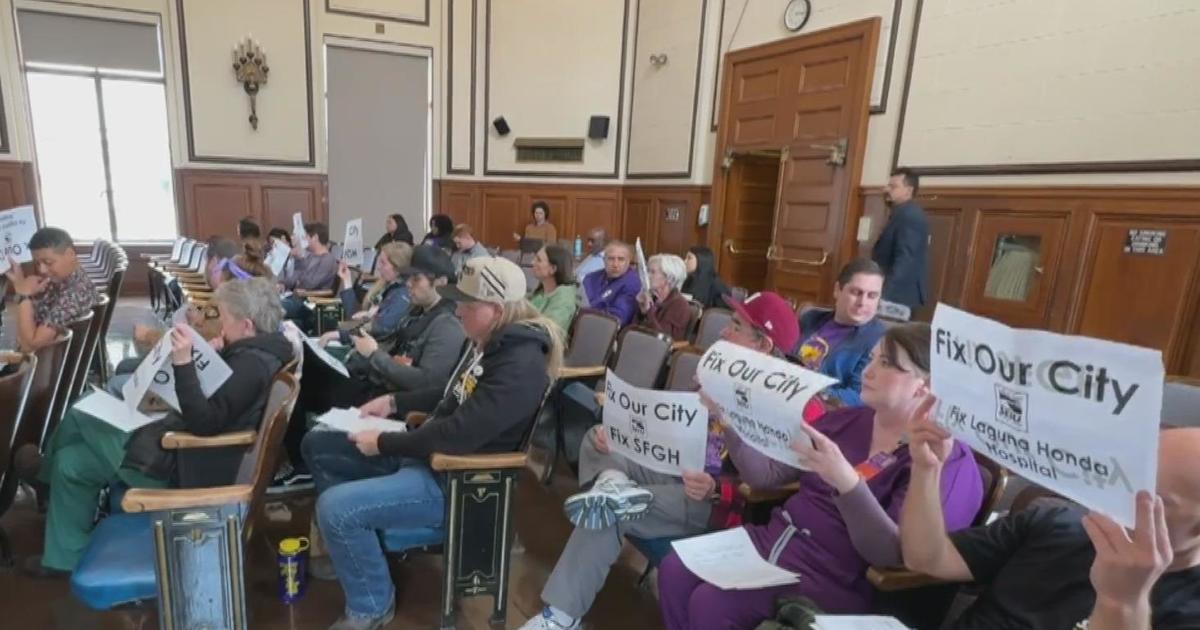UCSF Study: Electric Scooter Injuries Jump 222 Percent In Four Years
SAN FRANCISCO (CBS SF) -- The flood of electric scooters on city streets is also producing a wave of injuries in emergency rooms, many of them serious head injuries.
A University of California-San Francisco study finds scooter-related injuries and hospital admissions in the United States grew by 222 percent between 2014 and 2018. That's more than 39,000 injuries. Of those, nearly 3,300 required a hospital admission, an increase of of 365 percent.
The numbers are surprising even for the doctors that are seeing the injured.
"I've been on call where, literally, for seven days in a row we've had someone come in from one of the scooter accidents," says Dr. Geoffrey Manley, Chief of Neurosurgery at UCSF. "This paper is simply documenting what we're seeing in real time here every single day with people coming in with these accidents."
"As you would expect, as ridership grew tremendously," said Benjamin N. Breyer, MD, a UCSF Health urologist and one author of the study. "But the sheer volume of the injuries, nearly 40,000 over the study period. It makes you think there should be some things done to improve safety."
Perhaps more striking than the overall number of injured riders is the percentage of the accidents that resulted in head injuries. While the most common injuries were fractures, contusions and abrasions, the study found that nearly a third of the patients involved in scooter accidents suffered head trauma.
"We know that people don't wear helmets frequently," Breyer said.
Full Interview: UCSF Researcher On Wave Of Scooter Head Injuries
The study found scooter accidents produced head injuries at more than twice the rate of head injuries to bicyclists. Most of those injured were men (about two thirds) and people between the ages of 18 and 34.
"So, why is that happening?" asked Manley. "Well, most people are not wearing a helmet when they're on the scooters."
"It's been shown that helmet use is associated with a lower risk of head injury," added Nikan K. Namiri, a UCSF medical student and study co-author.
A quick survey of San Francisco streets shows the shared scooters' very nature leads to this safety predicament.
"Generally I try to think about it, but I use scooters and other modes of transportation episodically," said Kenny Lee as he grabbed an e scooter on Market Street. "So I don't always have my helmet with me."
Head trauma is not only serious, it can be extremely expensive. California Governor Jerry Brown signed a law that eliminated the requirement for helmets on riders 18 years of age or older in 2018. Since many riders grab shared scooters for only a few minutes at a time, helmets are often an afterthought. The study's authors think riders and scooter companies need to reconsider those habits.
California law treats e-scooters much the same as bicycles: helmets are optional for adults. Doctors, however, say the growing injury data should prompt government, and business, to rethink the wisdom of scooter fleets without helmets.
"I think the scooter companies really have an obligation to promote helmet usage, and making them more accessible," Breyer said. "Altogether, the near doubling of e-scooter trauma from 2017 to 2018 indicates that there should be better rider safety measures and regulation,"
"If you're going to get on something, whether it's a skateboard, whether it's a scooter, whether it's a bicycle, you really need to protect your brain," adds Dr. Manley. "The way to do that is wear a helmet."
Over the study period, urban hospitals received the highest proportion of patients (78 percent) compared to rural (20 percent) and children's hospitals (2 percent).
The UCSF study appears in Wednesday's edition of JAMA Surgery.



